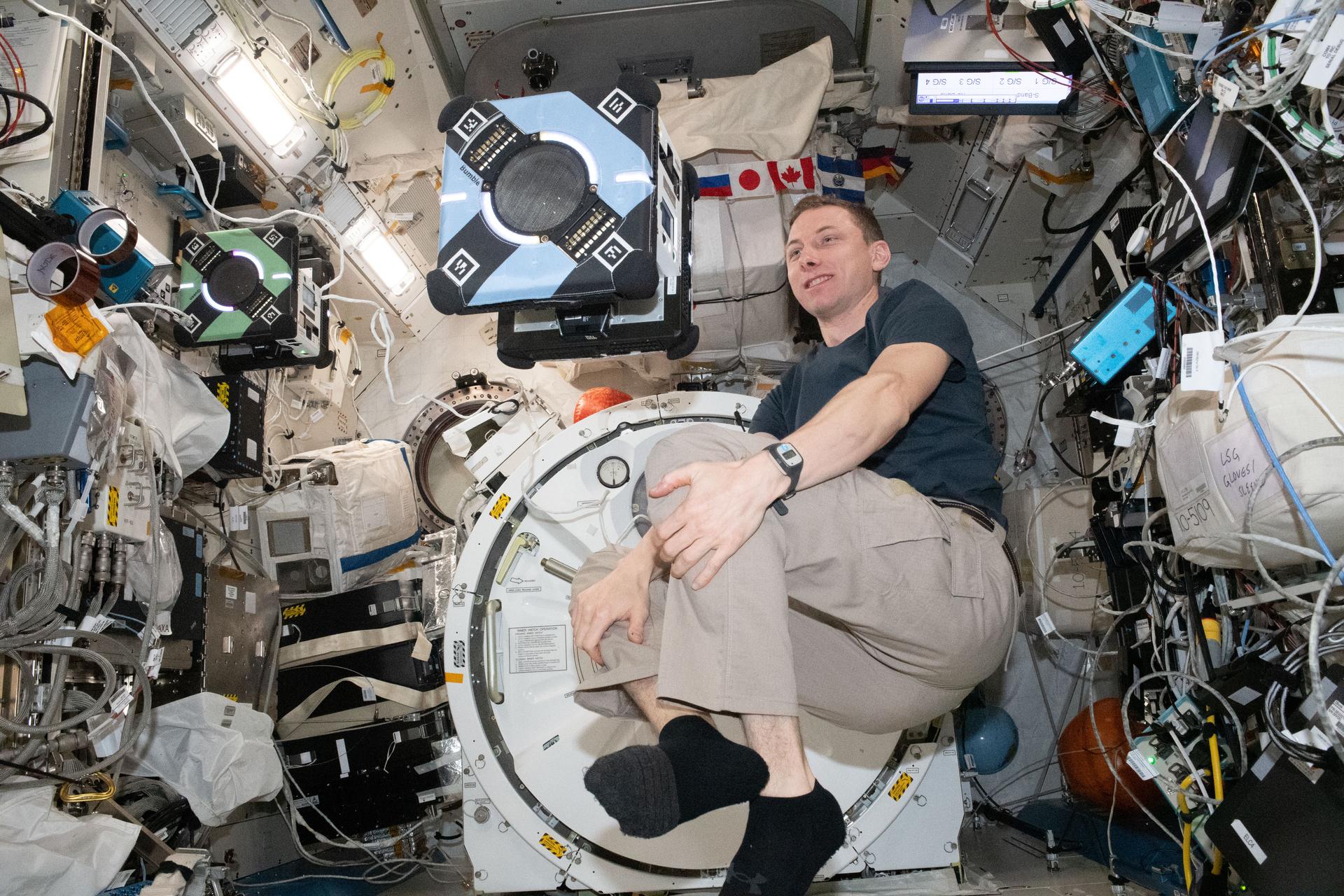NASA's Astrobee robot 'Honey' flies home to its International Space Station hive
"Honey," one of three free-flying robots, tests how to fix up things themselves in space.

NASA's yellow robotic bee is back at its space hive.
The yellow Astrobee free-flying robot, part of a set of three, is safely working on the International Space Station (ISS) after a flight to and from Earth for repairs.
"After initial checks, Honey was able to independently disengage from its docking station, maneuver through the space station ... and redock successfully without crew supervision," agency officials wrote in an Oct. 6 update, referring to activities completed a few weeks before.
Related: Meet the Astrobees! These tiny, cube-shaped robots have arrived in space
Honey and robo-companions Bumble (colored in blue) and Queen (in green) are cube-shaped robots designed to take some maintenance load off of astronauts, through activities like documenting experiments or taking inventory, agency officials said in 2016.
"In addition, the system serves as a research platform that can be outfitted and programmed to carry out experiments in microgravity — helping us to learn more about how robotics can benefit astronauts in space," NASA officials wrote at the time.
The Astrobee fleet, managed by NASA's Ames Research Center, first arrived on the ISS in 2019 aboard two separate cargo ship deliveries. It has engaged astronauts, researchers and students with mid-air maneuvers and autonomous flight.
Breaking space news, the latest updates on rocket launches, skywatching events and more!
Honey returned to Earth for a two-year pit stop, however, on the SpaceX CRS-23 spacecraft in September 2021, according to NASA, before its relaunch to space aboard a Northrop Grumman Cygnus ship in August 2023.
Honey, you’re home!Our yellow #Astrobee robot is back for another spin on the @Space_Station after spending a little time on Earth for maintenance. The robotic helper returns to work assisting @Astro_Woody and the rest of the crew. Learn more: https://t.co/3xAVAQZ0Xk pic.twitter.com/scquU7sUXsOctober 5, 2023
Re-activation of Honey was supervised by NASA's Woody Hoburg, a SpaceX Crew-6 astronaut who returned to Earth with the rest of his crew on Sept. 4, 2023. It wasn't the first time Hoburg played with the hardware; he also worked with Astrobees during a ZeroRobotics competition hosted at the Massachusetts Institute of Technology this summer, he said in an Aug. 3 post on X (formerly Twitter).
The cube-shaped robot set includes software and a docking system for recharging. They move through the space station using electric fans, relying on cameras and sensors for navigation. A perching arm on each robot lets them grasp on to handrails around the ISS to grab things, or to catch a brief rest.
As of April 2022, Astrobees had accomplished 750 hours and 100 activities of research on the ISS, according to NASA officials. They are also being tested for future ideas: For example, they once found an anomaly during a simulated issue in space.
Aside from space station research, Astrobees are used by students and guest scientists. "Since the robots are modular and can be upgraded, the system gives researchers and scientists diverse capabilities for performing a wide range of experiments inside the station," NASA officials wrote in 2016.
Astrobee isn't the first flying robot on the ISS. A previous generation of small freeflyers were called SPHERES, short for Synchronized Position Hold, Engage, Reorient, Experimental Satellite. NASA documentation and imagery suggests the experiment concluded in 2019, but Astrobee continues to build on the "lessons learned" from the two decades of research using SPHERES.

Elizabeth Howell (she/her), Ph.D., was a staff writer in the spaceflight channel between 2022 and 2024 specializing in Canadian space news. She was contributing writer for Space.com for 10 years from 2012 to 2024. Elizabeth's reporting includes multiple exclusives with the White House, leading world coverage about a lost-and-found space tomato on the International Space Station, witnessing five human spaceflight launches on two continents, flying parabolic, working inside a spacesuit, and participating in a simulated Mars mission. Her latest book, "Why Am I Taller?" (ECW Press, 2022) is co-written with astronaut Dave Williams.

